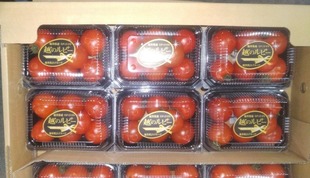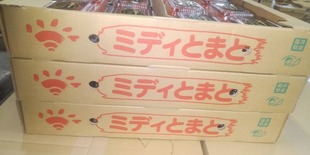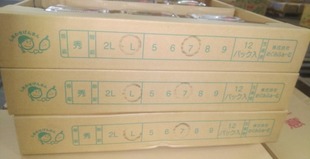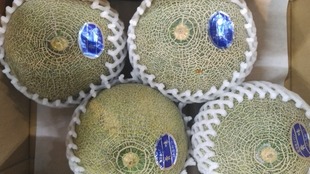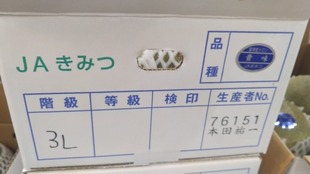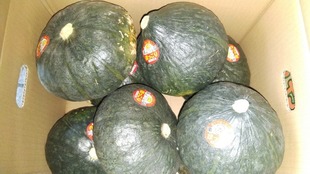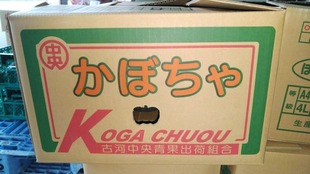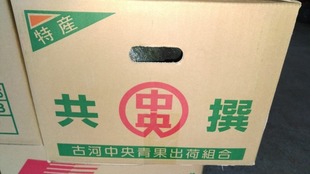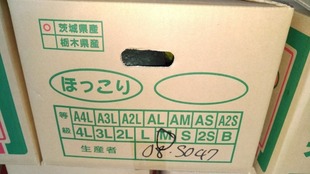【Product name】
Sweet Spring Orange
【Type】
Citrus L.
【Producing area】
The location of the head office; Minami Kumamoto, Chuo Ward, Kumamoto City, Kumamoto Prefecture, excluding former Ueki Town, Kamoto County, Jonan Town, and Tomiai Town, Shimomashiki District (JA Kumamoto City, JA Kumamoto Fruit Association)
【Origin of name】
From the image of an early spring fruit with a good flavorsome.
【Major features】
Every day, vegetable drinks were given to the staff of Kumamoto City Health Center (Oe, Chuo Ward, Kumamoto City) who are dealing with the new coronavirus. On February 9, 2022, the chairman of the JA Kumamoto Fruit Association visited the Kumamoto City Hall to give a vegetable drink and handed the mayor Onishi a list of 6000 vegetable drinks. The mayor who received it said, “I will use the new corona to manage the physical condition of the staff who are doing their best to protect the lives of the citizens.” Later, it seems that vegetable drinks were distributed to about 2,000 staff members working on the new Corona at the Kumamoto City Health Center and Kumamoto City Hospital (Higashi Town, Higashi Ward, Kumamoto City). On Sunday, September 5, 2021, Governor Ikuo KABASHIMA attended the completion ceremony of JA Kumamoto City Citrus Fruit Sorting Facility. Kumamoto City is one of the top-class producing areas of Satsuma mandarin in Japan, and this facility is responsible for sorting and shipping the fruits produced in the jurisdiction. With this renovation work, it was reborn as a state-of-the-art fruit sorting facility using AI and robots, and it seems that Shinto rituals and ribbon-cutting ceremony were held to celebrate the completion. At the ceremony, the governor congratulated, “It is a model fruit sorting place that symbolizes creative reconstruction and can be proud of throughout the country. It will surely contribute to the strengthening of production areas and lead to the development of the prefecture’s agriculture as a whole.” Says. Kumamoto City is the prefectural capital of Kumamoto Prefecture, which was transformed into an ordinance-designated city in April 2012. Located in the Kumamoto Plain, which is formed in the lower reaches of the Tsuboi River, Shirakawa River, and Midori River, which flow through the central part of the prefecture. The area is blessed with sunshine, with an average annual temperature of 16.5 degrees Celsius, annual rainfall of 1992 mm, and annual sunshine hours of 1964 hours. In particular, Kumamoto City has a high winter temperature, and it seems that eggplants are cultivated from autumn to spring, taking advantage of the warm winter climate. In addition, the summer evening in Kumamoto City is said to be “evening calm in Higo”, and it seems to be hot and humid with no wind. The Kumamoto City Agricultural Cooperative, which has jurisdiction over Kumamoto City, was established in April 1987 as the Yuho Agricultural Cooperative by merging 7 agricultural cooperatives in 1 city and 3 towns (at that time). After that, it merged with the Northern Agricultural Cooperative in October 1990 and changed to the current name in April 1992. The jurisdiction produces a wide variety of agricultural and livestock products, especially the squid and melon produced in areas such as Tenmei, Kitano, and Tomoai, and the mikan centered on the northwestern foot of Mt. Kinpu. are one of the leading production areas in Japan and are gaining popularity. The Kumamoto earthquake struck in April 2016, and the video JA jurisdiction suffered a lot of damage, but the union members have been working together seriously on reconstruction. The sales amount (FY2014) is rice, wheat, millet 954.73 million yen, vegetables 10,275.74 million yen, fruit trees 4,267.18 million yen, livestock 683.84 million yen, etc. The sales amount of eggplant in 2016 was 4.42 billion yen, which seems to account for about 40% of the total sales amount of vegetables. I heard that the cultivation of eggplant (Kumamoto long eggplant) in Kumamoto City began around the end of the Taisho era. In the past, it was shipped mainly in the summer with open-field cultivation, but now it seems that winter and spring eggplants are shipped from October to June due to the spread of facility cultivation. JA Kumamotoshi’s eggplant (brand name: Dekonasu) is a long eggplant with a voluminous feel, good luster, and sweetness. I heard that the cultivar uses “Chikuyo”. Therefore, we introduced “PC Chikuyo”, which can be expected to save labor based on parthenocarpy. The penetration rate increased significantly to 45% in 2016 and 85% in 2018, and 60-70% was introduced even in the All season. According to the producer, the introduction of “PC Chikuyo”, which does not require hormone treatment, has eliminated the time constraint of work and has been highly evaluated as labor saving. However, for cultivation, winter temperature and grass vigor management are important, and the grass is weaker than “Chikuyo”. The number of members of JA Kumamotoshi Eggplant Subcommittee in 2016 is 164 houses. There are 72 producers under the age of 40, and the average age is 36, which seems to be a group with many young people. The production area is 76.5 hectares and the production volume is 11,426 tons. It seems that the management area per house was 46.6 ares, and the average yield per 10 ares was about 15 tons. Kumamoto City is in danger of being hit by a typhoon until early October. Therefore, it seems that conventional greenhouses were planted in the open field in September, and the greenhouse vinyl was covered after mid-October when there was no concern about typhoon damage. In recent years, it seems that it has become possible to harvest from September by promoting the introduction of a weather-resistant house that can withstand a wind speed of 50 meters and planting it in August after covering it with vinyl. The introduction rate of weatherproof houses for club members was about 45% at that time, and it seems that they are still being introduced. The weatherproof house seems to be expensive at over 15 million yen per 10 ares. Since it is necessary to realize a management model that can withstand the investment, the subcommittee seems to be working hard to improve production technology. Reducing fuel costs is a major issue for winter-spring management, which requires relatively high temperature control even in winter. Therefore, it seems that the subcommittee is trying to introduce various energy-saving technologies and working to improve management. Bubble wrap sheet (bubble wrap sheet: American Air Products (then) company started manufacturing for pool sheets. In 1957, two engineers (Alfred Fielding, Mark Coveres) accidentally invented it. Air Products & Chemicals is an industrial gas company. The industrial gas business is used in manufacturing markets such as refining, petrochemicals, metals, electronics, food and beverages for atmospheric process gas and related products. Provides equipment. Operates through seven segments: Industrial Gas America, Industrial Gas Europe, Middle East, and Africa (EMEA), Industrial Gas Asia, Industrial Gas Global, Material Technology, Energy to Waste , And corporate and others. Also, it seems to be a supplier of liquefied natural gas process technology and equipment. The material technology business provides semiconductors, polyurethane, cleaning and coating, and the industry is an adhesive. In the industrial gas and material technology business, there are two lines. The product is manufactured and distributed.) Seems to be used for the lining of the house as a heat insulation measure. About 60% of the members have introduced it, and the heavy oil reduction rate is about 10%. At a press conference after the Cabinet meeting on January 25, 2022, Liberal Democratic Party heavyweight Mr. Hagyuuda will implement price restraint measures to curb soaring fuel prices such as gasoline and kerosene for the first time. It would be great if people involved in agriculture could benefit from this as much If the industry itself is not lively, the future of Japan will be dark and we cannot entrust the holy Japan to the children of the future. Without mixed agriculture, Japan’s development is unlikely. Looking at the changes in statistics, the gasoline price, which was 50 yen per liter as of April-August 1966, soared to 177 yen in 1982 after two oil shocks. After that, a reverse oil shock struck, and gasoline prices fell, but due to the effects of the subprime loan problem , they soared again in 2008. Immediately after that, it will rise again, but it has fallen to 109 yen in March 2016 due to the US lifting the ban on crude oil exports. From the consumer’s point of view, r that, the Lehman shock occurred and the situation was plummeting. 1995-2005 was relatively cheap and stable until about 17 years ago. But what about now? Isn’t the car away from the general public, especially young people, accelerating because of that influence? I personally like the constitution of Honda Motor Co. Mr. Soichiro HONDA, who met the power generation engine of a radio owned by the former Army, remembered his wife who went shopping far away. He seems to have converted about 500 engines into auxiliary engines for bicycles and put them on the market. With unprecedented convenience and a flood of orders, he quickly began developing his own engine. , and i n 1947 he introduced the A-type engine as the first product to bear the Honda name. Complete. The Japanese car industry that followed him is still great and should not be depressed.) The reduction rate seems to be about 30%. Also, the film of the curtain material has been increased in thickness from 0.5 mm to 0.75 mm, which seems to enhance the heat retention effect. The circulation fan contributes to the elimination of temperature unevenness in the greenhouse. It seems that these energy-saving measures are compiled as technical materials, explained at the local study group and individually distributed to the members of the department to share information. Eggplant is a plant that prefers high temperature and humidity, but if the temperature rises too high, fertilizer injury will occur and the quality will deteriorate. Also, from April to May, the occurrence of unripe fruit due to overdrying seems to be a problem. Therefore, a fine mist cooling device that lowers the temperature by spraying water from the ceiling into the house has been introduced, centering on the newly constructed weather-resistant greenhouse. By utilizing the fine mist cooling device, it seems that it has become possible to lower the temperature inside the greenhouse during high-temperature drying and to secure appropriate humidity. Also, in winter, the greenhouse is almost starved of carbon dioxide because the greenhouse is rarely ventilated to keep it warm. Therefore, in recent years, there has been a movement to increase sales in winter by introducing a carbon dioxide addition device, and it seems that about half of the members have introduced it since that time. It seems that the effect of adding carbon dioxide was different depending on the producer. I hear that it is necessary to continue to study effective addition methods and eggplant management techniques. At the same time, the number of producers who utilize devices (professors, etc.) that measure the environment such as temperature and humidity and carbon dioxide concentration in the house has increased, and about 30% of the members have introduced it. Establishment of IPM (comprehensive pest management aiming at halving the number of pesticide sprays by controlling the use of natural enemies by using selective pesticides): As a soil preparation measure, every summer after harvest, flooding and solar heat soil disinfection are carried out in the greenhouse. By doing so, pests such as nematodes are controlled and continuous cropping disorders are prevented. As a measure against soil diseases such as Ralstonia solanacearum and plague, it seems that reduced soil disinfection using rice bran and wheat bran and soil disinfection with chemicals are performed. In addition, it seems that soil preparation is being thoroughly conducted by conducting a soil cross-section survey of fields with high yields and analysis of residual fertilizer in the soil. In the facility eggplant cultivation, there are concerns about whiteflies, thrips, leaf spots, Corynespora melongenae., And Ralstonia solanacearum, but it seems that measures are being taken by soil preparation and chemical rotation control. I heard that the biggest problem is the control of thrips. Thrips seem to cause deterioration in quality and yield due to feeding damage. The subcommittee will establish an IPM by combining not only the control of pests that rely only on conventional chemical pesticides, but also the utilization of natural enemy organisms such as thrips and the improvement of greenhouse equipment such as the expansion of insect repellent nets at the openings of the greenhouse. Seems to be aiming for. At the same time, new materials and new technology exhibition fields are set up every year, and study meetings and seminars are held at the same time mainly by the officers of each subcommittee to share information and improve the level of technology within the subcommittee, which is rare. Seems to be making an effort to see. Every month, each standard is scored and settled so that producers can produce standards that meet market needs. In particular, we have introduced a point system that takes into consideration the shipment of mainly L and M sizes. In addition, when the shipping market was consolidated into 25 markets, it became possible to form prices in each market in an advantageous manner, which seems to have led to an increase in name recognition. In urban consumption areas, slightly larger eggplants are preferred in winter, and slightly smaller eggplants are preferred in autumn and spring, so it seems that they are trying to ship according to the standards. In 2006, a new fruit sorting plant was constructed to consolidate collection and fruit sorting in one place. In order to speed up the receipt of goods, the time to bring them to the fruit sorting area is set for each region. This seems to have led to a reduction in shipping time for producers who have become farther away. Also, I heard that in order to ship fresh eggplants, we make sure to ship the harvested eggplants in the morning. Since the shipment is mainly in the Kanto, Chukyo, and Kansai areas, it seems that they are conducting sales promotion activities in large consumption areas. The women’s department is currently working on expanding consumption by creating two types of recipes. Also, in order to increase consumption in the prefecture, it seems that sales promotion activities are carried out in the center of Kumamoto city every year on “Good eggplant day” (April 17th). In addition, we will hold shipping and sales meetings in the six major production areas of Nasu (Kumamoto, Fukuoka, Saga, Okayama, Kochi, Tokushima), and cooperate for planned sales by grasping the production and shipping status of each prefecture. Seems to be planning. From January 26, 2022, the selection of unheated and roofed Citrus reticulata’Shiranui’ began at JA Kumamoto City Yume Mirai Citrus Fruit Sorting Center. As of the 28th, about 10 tons per day will be shipped nationwide. It seems that the total shipment volume is expected to be 60 tons. From mid-February to the open field, from late April to long-term storage, it seems that relay shipments will continue until mid-June. In the JA Citrus Subcommittee, 10 of the 200 houses of Dekopon producers seem to be cultivating unheated and roofed Dekopon. JA ships products that meet the sugar content and citric acid standards as “Dekopon”. At the fruit sorting plant, dekopons placed on free trays are applied to optical sensors one by one, and it seems that workers manually pack the dekopons that meet the quality standards. The 2021 production has a large amount of fruit set, and the production amount was 108% of last year. It had a high sugar content and was finished in a size of 2L and 3L, which is about the same as normal. “Yume Mirai Mikan” is a branded Mikan of the same JA that sells delicious agricultural products with quality, freshness, safety and security. “Sweet Spring” : Certification number Tanzero Norin No. 1, Variety name Sweet Spring, Former strain name Okitsu No. 20, Certification date June 1981, Mating parent (mother x father), Ueda Wenzhou x Citrus x hassaku, Growing institution (at the time of certification) Fruit tree test site Growing institution (current) (Germany) Fruit Tree Research Institute, National Agriculture and Food Research Organization, growing period 1947-1981 (about 35 years), main characteristics, good yield, fertility, resistant to citrus Variety. The tree has strong cold resistance and matures from January to February, making it suitable for shipment to raw food in early spring. The fruits are well-aligned, tight and juicy, with a sugar content of 12 to 13%, an acid of around 0.8%, and a good flavor. Growth characteristics / The tree vigor is stronger than that of “Satsuma mandarin”, and the appearance of the tree is a little standing in the young tree, but it opens when the result starts. Weak thorns may occur on young trees and on branches that are slightly legginess, but they do not occur when the tree vigor settles down. The leaves are medium in size and more rounded than “Satsuma mandarin”. Tsubasa is smaller than “Hassaku”. The cold resistance of the tree is quite strong, about “Unshu Mikan”. Elsinoë fawcettii (Winter lesions on leaves and branches. Winter lesions are 10-28 ° C (suitable temperature is 20-24 ° C), and spores begin to form when wet due to rainfall for about 3 hours. It seems that the resulting spores are carried by the rain and adhere to young leaves and fruits. The temperature at which they can invade the leaves is 13 to 30 ° C (the optimum temperature is around 26 ° C). It seems to be latent and develop the disease for about a day. The latent period of the fruit is slightly longer than that of the leaves. Spores are formed on the newly formed lesions and infect young leaves and fruits one after another (secondary infection). It seems that the disease does not occur when it gets old. In the normal year, the disease of the leaves is not seen by the beginning of June, but the leaves are soft due to cloudy weather, heavy rain and low temperature from April to May. If there is, it seems that the period of infection of the leaves will be longer. Also, if the temperature and humidity conditions are adjusted, it seems that the disease will also occur in the summer and autumn branches. It is most sensitive to the young fruit stage. The diseased summer and autumn branches tend to be important sources for the following year over the winter.) It is stronger than “Unshuu mikan”, but Xanthomonas citri subsp. Citri (leaves, branches). The winter lesions of Elsinoë are the primary source of transmission, but the lesions on the treetops in summer and autumn seem to be particularly important. The amount is even higher than the lesions on the summer-autumn treetops, and it is more important as a source of transmission. It seems that it is transmitted from the scars. The main infection period to spring leaves is from early May to mid-June. After the infection to spring leaves, it is repeatedly transmitted to spring branches and summer and autumn treetops. By the end of the month, it seems to be infected mainly by secondary transmission from leaves. Wind and rain accompanied by strong winds with a wind speed of 6 to 8 m or more, especially summer typhoons, seems to be the most important disease promoting factor. There seems to be a difference. For windbreak measures, windbreak fences, windbreak nets, etc. are installed. Diseased branches are pruned and removed as much as possible. In particular, the diseased branches of summer and autumn treetops are removed. Spraying. If wind and rain accompanied by strong winds or typhoons are expected to occur, spray chemicals in advance. For chemical control in sensitive varieties cultivation gardens or existing gardens, in addition to pre-emergence control, late May (Immediately after the petals fall) Once in June, once in late June (rainy season), once or twice in mid-August to late September (autumn season). In addition, in multiple gardens, the number of control will be increased as appropriate, such as pre-flowering control (early May). Control citrus leaf miner. Avoid frequent occurrence of summer and autumn treetops due to heavy pruning.) Is somewhat weak. The shape of the flower is similar to “Hassaku”, but the size is smaller. The fertility of pollen is low, but the fruit set is good and fertile. However, it seems that there is a slight tendency for biennial bearings. There is almost no fall in winter. Quality characteristics / The fruit weighs about 250g, is oblate and has a good ball alignment, and the fruit surface is coarser than “Hassaku”. The pericarp is yellow-orange and close to “Hassaku”, but the green color may be poor. The thickness is about 4 mm, the quality is strong and hard, and while it is tight, it is a little difficult to peel. The sac is a little hard but has no bitterness. The flesh is “orange” and darker than “Hassaku” but lighter than “Satsuma mandarin”. The meat is a little hard but juicy, the sugar content of the fruit juice is 12 to 13%, and the sugar content is around 0.8%, and the flavor is good. Due to its low pollen fertility, there are few seeds. It varies slightly depending on the presence or absence of pollinated trees in the surrounding area, but the average number is about 6. The seeds are rather small and monoembryonic. The ripening period is from January to February, and it is suitable for shipping to raw food in early spring. However, if left unharvested until after March, it may cause a slight rise. Suitable for cultivation Soil in warm winter, sunny and well-drained Meaning of cultivar name Expected to be harvested and shipped in early spring. A dream future mandarin orange: 夢未来みかん with a refreshing scent grown in a vast mandarin orange garden. It is easy to eat, the taste is condensed, the rich sweetness spreads, and the juicy juice overflows. Sweet spring seems to be difficult to cultivate and the production is not very large, but it is actually very delicious. It is a citrus that has a good balance of sweetness and acidity, and has a refreshing acidity. It looks rugged because it inherits the blood of Hassaku orange, but its elegant taste is attractive.
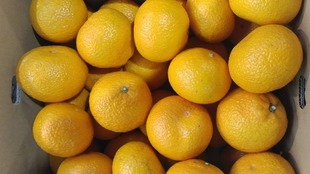
It is widely cultivated in the Kyushu region, which is also known as the production center of mandarin oranges, such as Kumamoto prefecture, Kagoshima prefecture, and Miyazaki prefecture. Most of them are produced and consumed of local food, so it seems that only a small amount is available on the general market. The SWEET SPRING harvest begins in early November and continues until around January of the new year. It will be on the market from January to February. The best time to eat is from late November to February. If it is a direct sales office, we recommend that you purchase the ones from the beginning of the season as soon as possible.
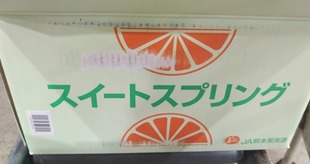
There is no bitterness or sourness, and it is characterized by a lot of fruit juice and a refreshing sweetness. Since the peel is thick and rugged, it is difficult to peel it off by hand, so it is best to cut it into combs like oranges and eat it. At the beginning of the emergence, the peel of some agricultural products has a little green color, but it tends to gradually turn orange. Even if the skin is green, it will be delicious enough.
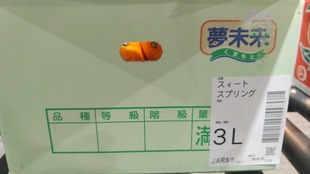
At the foot of Mt. Kinbo (Centered on Mt. Ichinodake at an altitude of 665 m, located in the area of Kawachi Town, Houtaku District, Nishi Ward, Kumamoto)a caldera-type volcano (mainly a large, round and concave terrain created by the eruption of a volcano) centered on Mt. It is said that mandarin oranges have been cultivated actively since the Edo period. There used to be four fruit sorting plants in the area, but in 2000, the fruit sorting plants were integrated to improve quality, and the JA Kumamoto City Citrus Subcommittee created a brand named “Yume Mirai Mikan”. Seems to have been.
